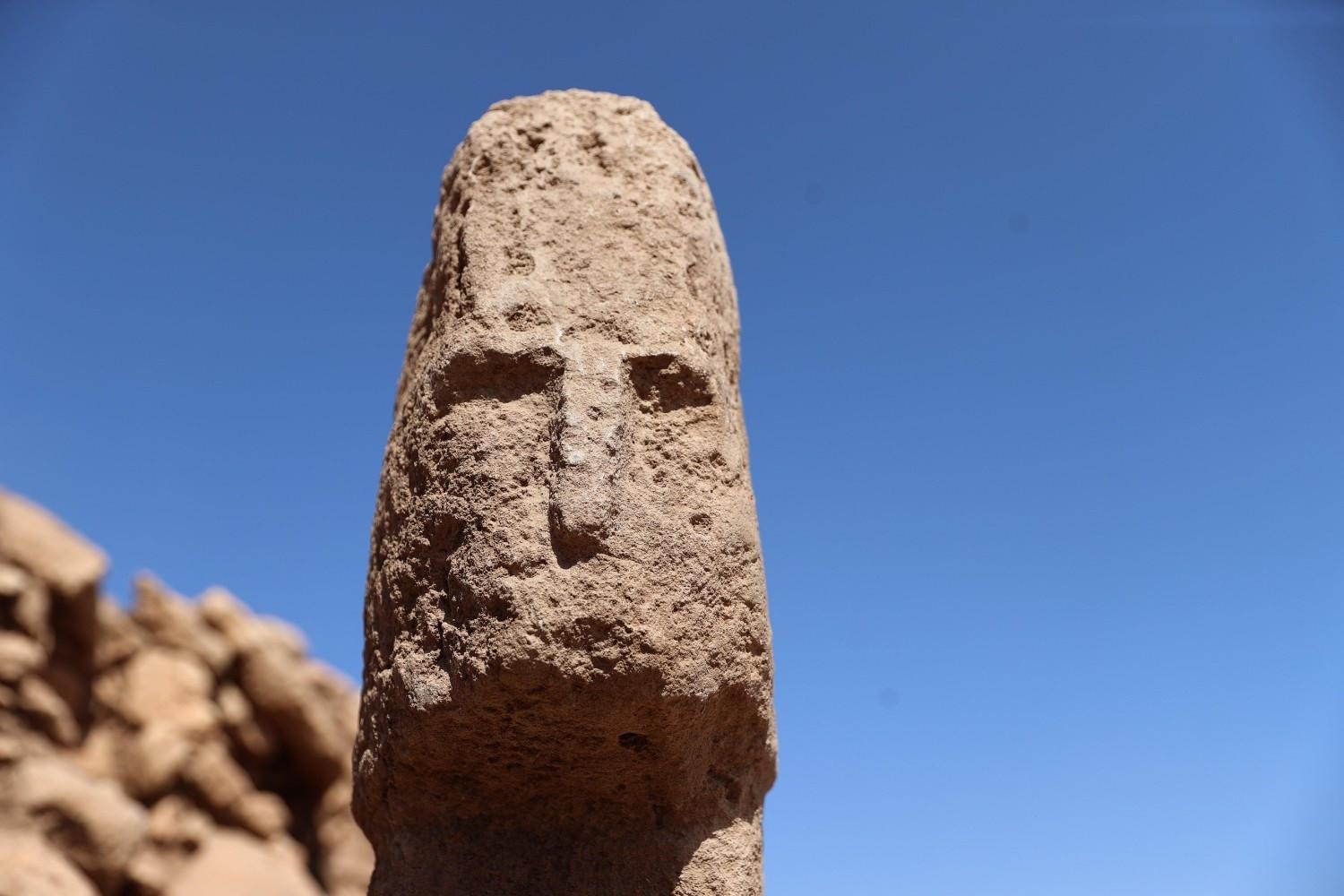Face carving found on T-pillar backs human figure theory
ŞANLIURFA

The discovery of a human face depiction on the surface of one of the T-shaped pillars at the Karahantepe excavation site in the southeastern province of Şanlıurfa reinforces the theory that these stones symbolize human figures.
During this year’s excavations at Karahantepe, one of the leading Neolithic settlements under the Taş Tepeler Project, three T-shaped pillars were identified within a residential structure. On the side surface of one of the stones, a human face with eye sockets, a nose and distinct facial features was found. This discovery strengthened the view that the horizontal part of the T-shaped stones represents the “head” while the vertical part represents the “body.”
Professor Necmi Karul, head of the Karahantepe excavations, told state-run Anadolu Agency that the structure was built vertically on the ground, its walls were covered with clay and its floor was paved with flat stones.
Karul pointed out that the pillars placed inside the dwelling were smaller than those in public areas, saying, “Therefore, this shows us that they had a load-bearing function for the roof but also carried their own symbolic meaning within the houses. It reveals that their surfaces were decorated.”
He emphasized that each new artifact unearthed in the region is highly significant for the course of history.
Saying that the human face depiction stood out among the findings, Karul said: “From the reliefs on the side surfaces — the arm and hand reliefs, the best examples of which are in Göbeklitepe — we had suggested that they symbolize humans, that beyond carrying the roof they had a symbolic meaning, with the upper horizontal part representing the head and the vertical part the body. This finding clearly supports that idea. If you look closely, the front surface of this ‘T’ has a sculpted human face. The facial expression, eye sockets, nose and sharp contours exactly match the depictions we see in the statues. The presence of a face, together with the arms and anthropomorphic reliefs seen on other statues, serves once again as evidence and clearly shows that these pillars symbolize humans.”
Karul added that excavations at Karahantepe have gained significant momentum under the Taş Tepeler Project and the Heritage for the Future Project launched by the Culture and Tourism Ministry in 2021, noting that work continues over an area of 6,000 square meters.















